Tenda TEM2010F Management
This was a switch that is sold as unmanaged, but then there is a toggle switch on the front that might be a bit confusing. Standard is the standard unmanaged mode.
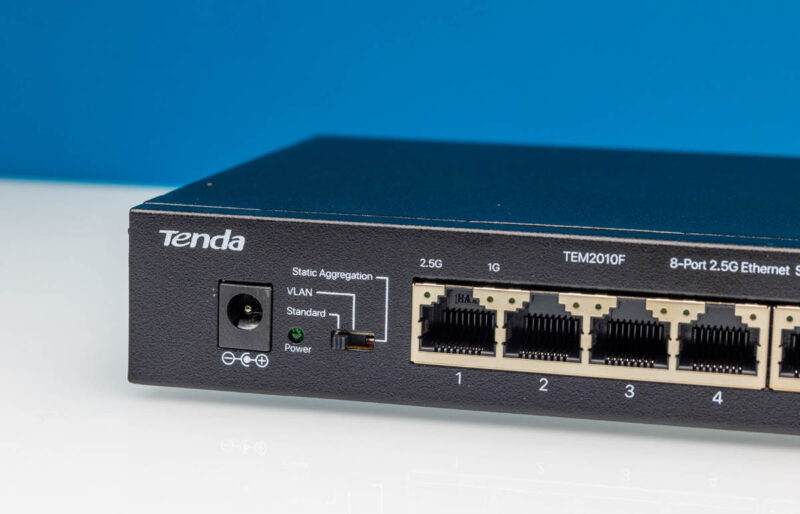
VLAN mode has ports 1-8 isolated from one another, but they can communicate with the SFP ports.
Static Aggregation is one that Tenda sometimes calls “NAS Dedicated Mode.” To make it more confusing, sometimes Tenda will market this as a 5G connection mode for a NAS on ports 7-8 and 9-10. It essentially makes a link aggregation group between those two port pairs, so if you have something like a NAS and are still using link aggregation instead of SMB3 multi-channel, and the NAS has two 2.5GbE ports, you can plug them into those port pairs and do link aggregation. Most NAS units support SMB3 multi-channel these days, so we would generally tell folks to skip this feature.
Tenda TEM2010F Performance
Here is the performance chart we use by blasting traffic across the switch.
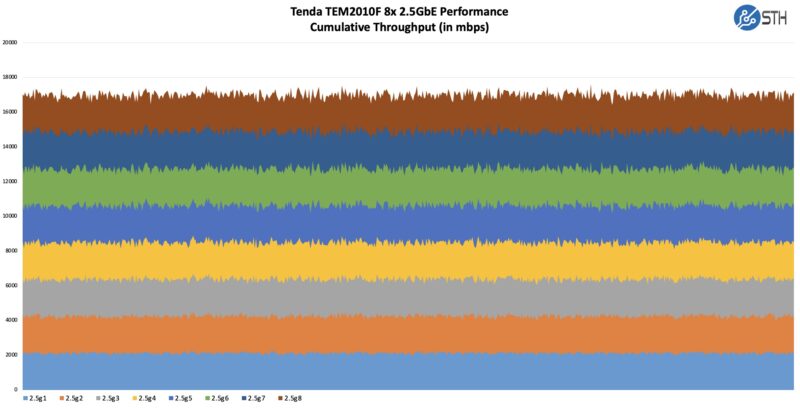
Here, we ran into an issue. Our test infrastructure has 1G/ 2.5GbE over copper, and 10G, 25G, 100G, 200G, 400G over fiber. We tried the 2.5GbE over SFP+ to RJ45 adapters, and they struggled to stay up for a week, as we expect during our stability testing. The adapters run fine on other switches at 10G speeds, and we have tried three different sets at this point, but the links would go down in this switch. We tried 2.5G optics in a bespoke solution, but that does not run in our standard test harness. So, we have the eight 2.5GbE ports and will just leave the other two. It is not ideal, but we do not want to publish numbers on the SFP 2.5G ports if we cannot test them properly and reliability.
Tenda TEM2010F Power Consumption
With this, we get a 24W power adapter at 12V and 2A. That felt like a lot compared to some of the other switches in this capacity range.
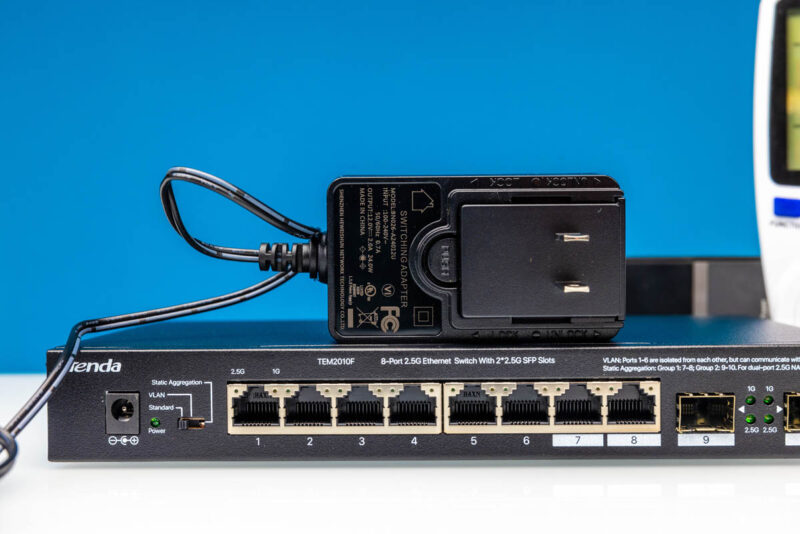
At idle, we get 6.0W. That is crazy. For some context, we would normally think that 3W is high on an 8-port 2.5GbE switch with 2-ports of SFP+ 10G.
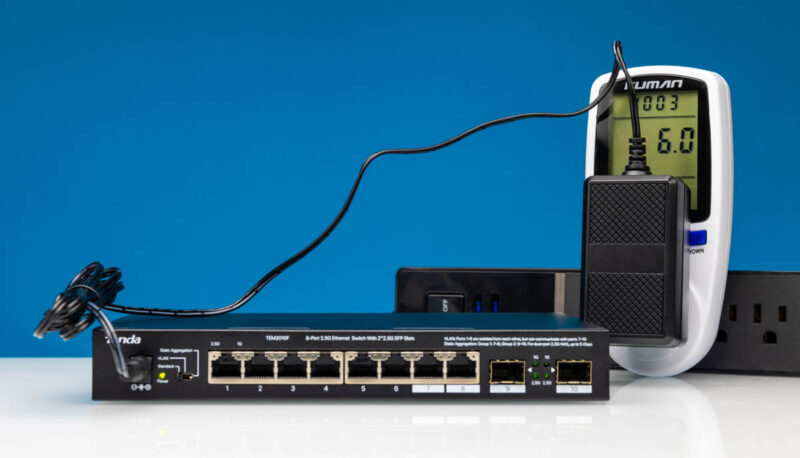
Connecting a 2.5GbE link adds 0.3W for 6.3W total.
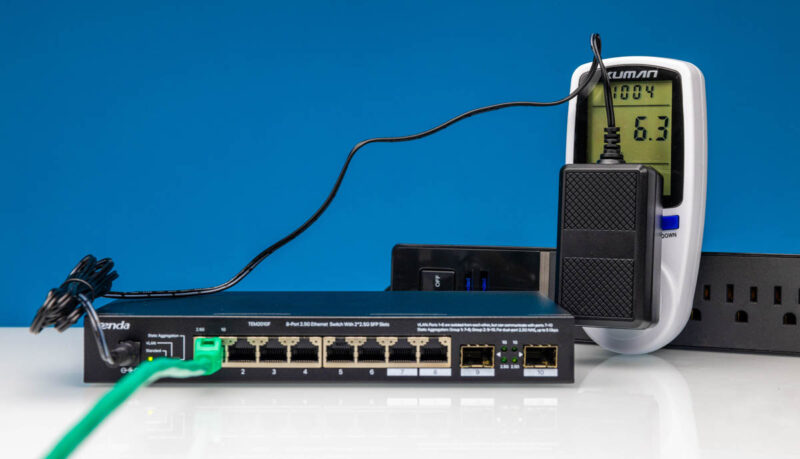
Adding a SFP+ to 10Gbase-T adapter adds 1.3W. It is running at 2.5GbE speeds so it seems to be using less power here.
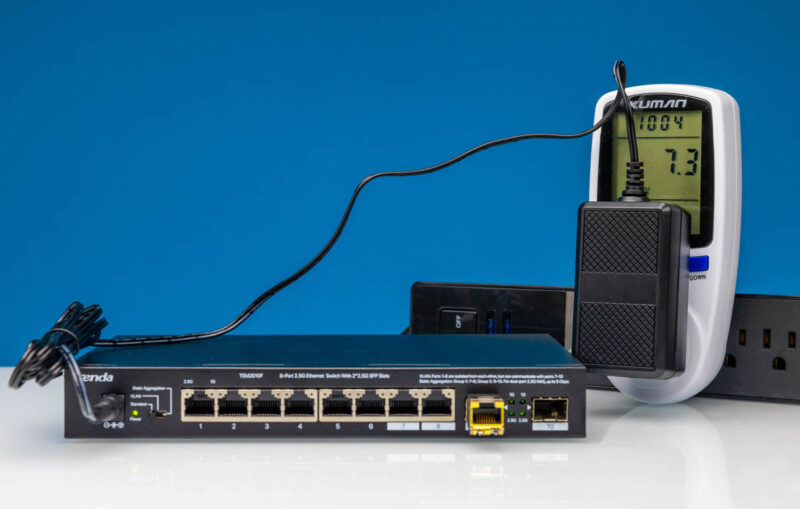
The power consumption on this switch is high. There is no way to sugarcoat it.
Final Words
Reviewing this switch was an emotional rollercoaster. We bought the switch late at night without realizing the two SFP 2.5GbE ports were not SFP+ 10G ports. When it arrived, it was very expensive. Fast forward five plus months and it is now half the price. It has some funky features like a switch that changes the unmanaged nature of the switch. Then we plugged it in, and it sucked power and we ran into challenges with adapters in the 2.5G SFP ports. We had many ups and downs with this switch.

The Gigaplus GP-S25-0802 is a better value with dual SFP+ ports and lower power consumption. Still, this Tenda is $10 less expensive and it has the VLAN switch if one needs that. If the pricing goes down significantly, the Tenda would be a neat option.
Where to Buy
We purchased our unit on Amazon. Here is the affiliate link for this model.
Ultimate Fanless 2.5GbE Switch Buyer’s Guide
You may have seen that we published the Ultimate Cheap Fanless 2.5GbE Switch Buyer’s Guide. Here is the video for that one:
You can see more switches in this class in that video and we are keeping the link above updated with the switches we review. It is great to finally be done with this series!


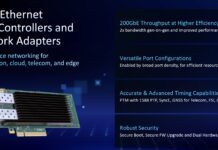
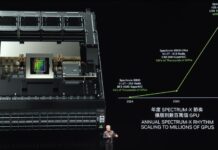
2.5G SFP is very odd choice. Interestingly on their official website unmanaged switch page, the name is just “8-Port 2.5G Ethernet Switch”, without mentioning of the SFP ports until you open the product page. Meanwhile they do have TEM2010X which comes with two 10G SFP ports. The chassis is slightly different so it’s not like they are reusing the shell. I wonder if TEM2010F was just a failed design of TEM2010X and they are trying to recoup some loss.
I’ve been using 2 such switches for almost a year. SFP ports work poorly with 1G modules for 2 manufacturers. Either the connected device cannot be discovered, or it detects it, but it causes the switch to block. I was forced to use a 1G switch to use all my older 100m/1G devices.
2.5G ports work well. I have 7 devices on one, on the other 8. At a large temperature range of 5 ~ 40C. The cooling is good and does not heat up much at high temperatures.
Unlike other Chinese manufacturers, Tenda certifies its production for use in the EU. They have a “CE” marking and a decent pack with a short guide.
I have not used the advanced VLAN and static aggregation features.
The quality of production is high, I am pleased with these switches.